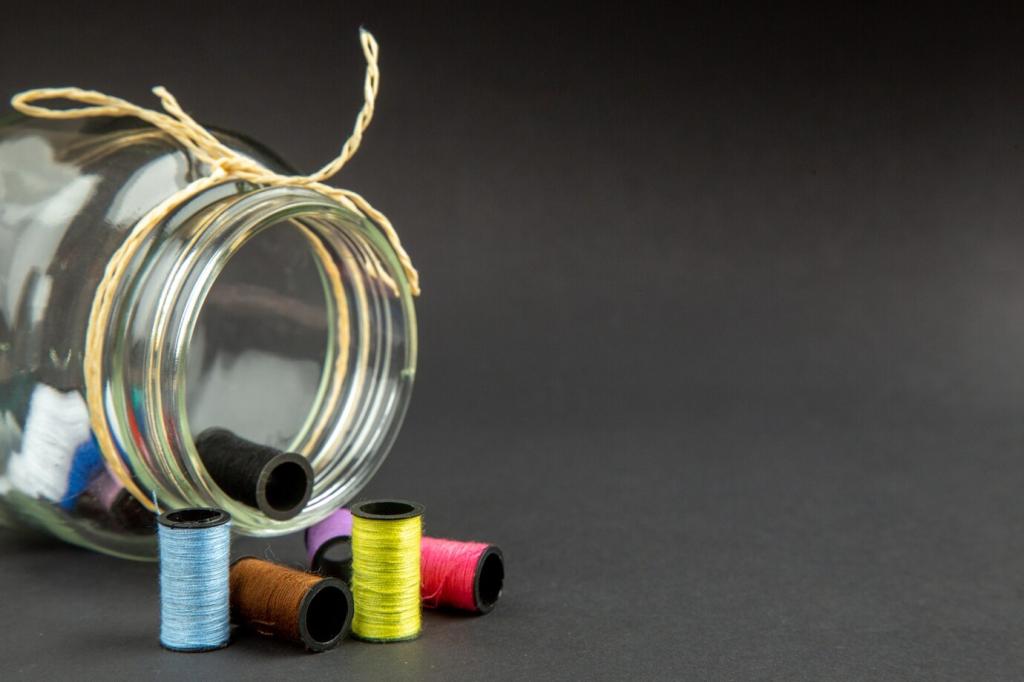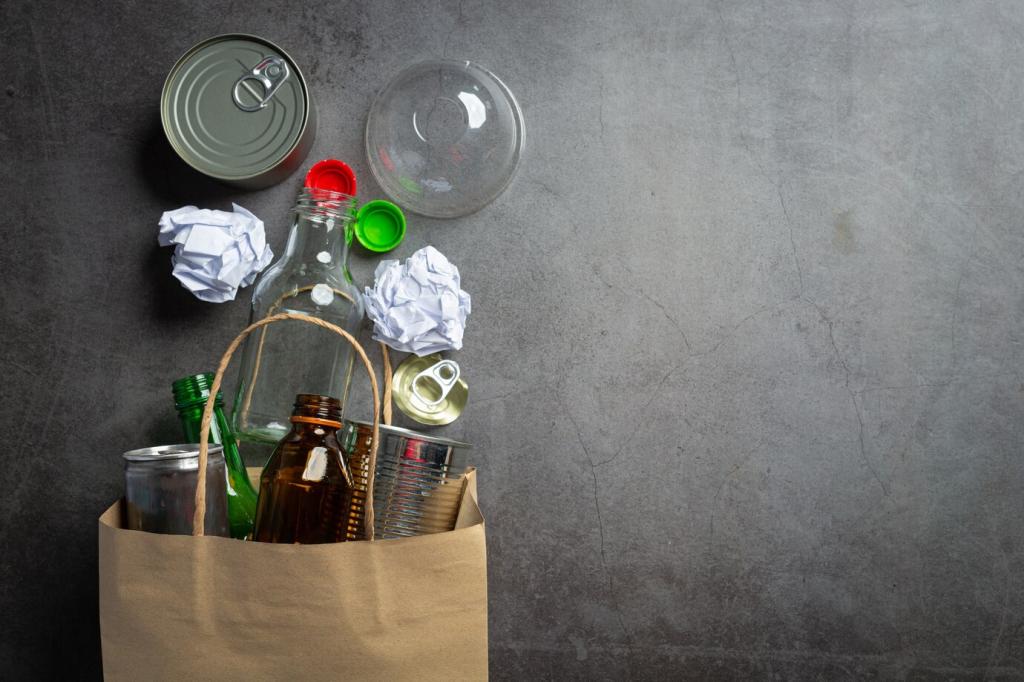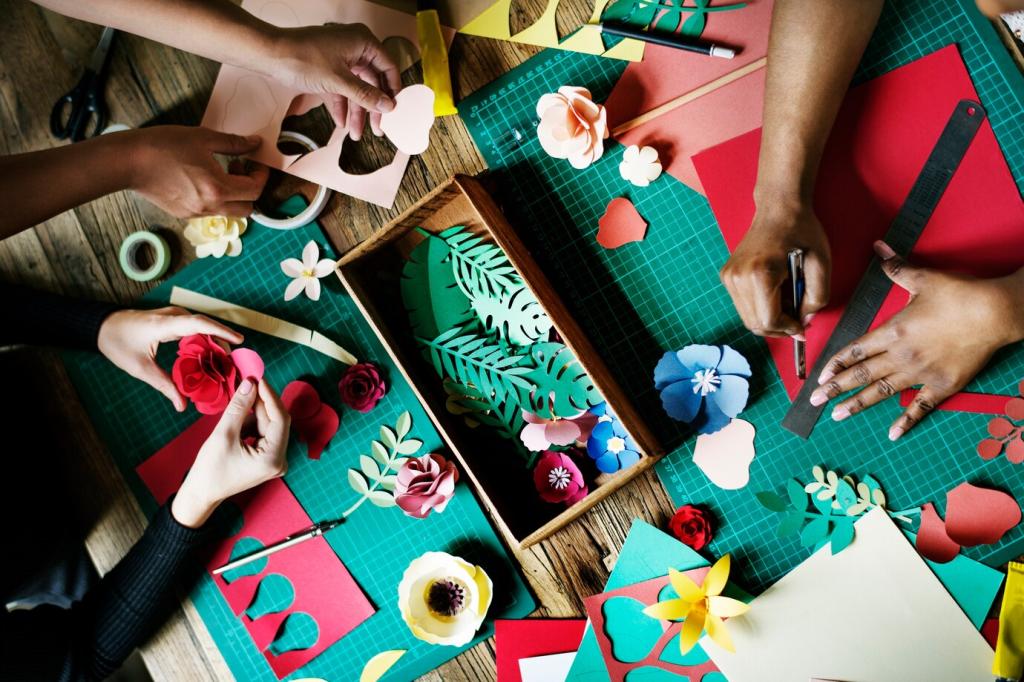Creative DIY Projects for Upcycling Old Furniture
Colorful Painted Transformations
01
Choosing the Right Colors for Maximum Impact
Selecting the right color enhances the character of your furniture and helps define the mood of its environment. Bold hues can energize a space, while soft pastels cultivate calmness. Think about your current décor, desired atmosphere, and how a new shade will blend or stand out. The psychology of color also plays a vital role—vibrant reds evoke warmth, while tranquil blues promote relaxation. Consider sampling colors on a hidden area of your piece to see how they interact with light and surroundings before committing to a final choice. Don’t be afraid to experiment, as sometimes the most surprising combinations—like neon accents on old wood—bring exceptional results.
02
Techniques for a Flawless Paint Finish
Achieving a smooth, professional paint finish involves more than simply brushing on a new coat. Proper preparation is crucial: sanding, cleaning, and priming the surface ensures paint adheres and looks its best. Explore various application methods, such as foam rollers for streak-free coverage or stenciling for unique patterns and details. Layering techniques like dry brushing or distressing add depth and vintage charm. Sealing your painted furniture with a clear topcoat boosts durability, protecting against daily wear and tear. Each stage is key, and patience rewards you with a durable, visually stunning final product.
03
Incorporating Patterns and Accents
Patterns and accents elevate painted furniture into functional art. Use painter’s tape and stencils to create geometric shapes, stripes, or intricate motifs. Go beyond paint by highlighting handles, legs, or trims with contrasting shades or metallic touches. Decals and transfers add another versatile dimension—florals, typographic statements, and whimsical images can instantly update even the simplest item. If you’re confident, freehand painting personalizes the piece with unique illustrations. These decorative finishes capture your individual style, making your upcycled furniture a true conversation starter in any room.
Reinventing Functionality
Transforming Dressers into Unique Kitchen Islands
An old dresser can be reborn as a rustic or contemporary kitchen island, providing additional storage and workspace. Remove lower drawers to make space for baskets or shelving, replace the top with a durable countertop, and finish with caster wheels for mobility. Paint or stain the exterior to match your kitchen’s color scheme, and don’t forget compatible hardware—large pulls or towel racks lend further functionality. The result is a one-of-a-kind fixture that balances style and substance, making your meals and gatherings that much more enjoyable while conserving resources.
Turning Headboards into Statement Benches
A neglected headboard can enjoy a delightful second act as a striking entryway or garden bench. By attaching side panels and a sturdy seat, you create a sturdy sittable structure. Paint and upholster as desired, choosing fabrics and colors to complement your décor. This project fuses nostalgia with practicality, especially when preserving a family heirloom or flea market discovery. The end product serves as a comfortable resting spot and a bold visual anchor that greets visitors with creativity and charm.
Creating Storage Solutions from Bookshelves
Bookshelves, even when outdated, offer a world of organizational potential. Refurbish with paint and new hardware, then repurpose them as mudroom cubbies, craft supply centers, or display units for collections. Add fabric bins or baskets for concealed storage, and install hooks or labels for even more functionality. This approach not only declutters your home but also showcases your ingenuity, ensuring every piece of furniture earns its place and purpose anew.
Textile Makeovers and Upholstery Art
A well-chosen fabric completely transforms an old chair, making it a focal point of any room. Explore vibrant patterns, rich velvets, or classic linens—each material alters both appearance and tactile appeal. Removing old upholstery and padding, if necessary, ensures a comfortable seating experience and allows for better fit and finish. Secure your new fabric with attention to detail, using a staple gun or upholstery tacks, then consider adding decorative trims or buttons for extra flair. The result is a personalized creation that feels fresh, contemporary, and uniquely yours.
Sentimental or unused garments can begin a new chapter as cushions adorning your upcycled furniture. Cut fabric squares from shirts, jeans, or dresses, then sew them together for a charming patchwork effect. The combination of textures, patterns, and colors tells a story—each cushion becoming a memory-filled masterpiece. Filling with soft materials and finishing with sturdy seams provides comfort and durability. Not only do these cushions freshen up seating, but they give you a sustainable way to cherish beloved textiles for years to come.
Slipcovers are a versatile, budget-friendly option for refreshing tired sofas and protecting their structure. Customized or ready-made, slipcovers let you experiment with seasonal colors, playful prints, or elegant neutrals. They’re easy to remove and wash, making them practical for families or pet owners, and can be swapped out whenever you desire a new look. With a little sewing know-how, you can tailor your own, ensuring an exact fit and a professional appearance. This simple update breathes new life into sofas, extending their usefulness in style.
Crafting Unique Knobs and Handles
Standard knobs and handles can be easily replaced or crafted from unexpected materials for a bespoke look. Consider using vintage spoons, beads, or ceramic pieces as eye-catching hardware. With a drill and some adhesive, transforming trinkets or repurposed items into functional handles is an accessible weekend project. Each choice reflects your style and adds distinction to upcycled furniture, proving that even the smallest details can make a substantial impact on design and atmosphere.
Applying Artistic Techniques to Existing Hardware
Not every project requires new hardware—a little artistic imagination goes a long way toward updating what you already have. Paint metallic finishes onto handles, or use decoupage to layer on patterns and pictures. Embellish with fabric, washi tape, or even textured paints for visual and tactile intrigue. By customizing hardware, you infuse personality and coordinate it with the rest of your piece—achieving a harmonious, updated appearance that feels curated rather than off-the-shelf.
Distressing, Aging, and Shabby Chic Effects

Creating a Timeworn Look with Distressing
Distressing involves selectively removing fresh layers of paint to reveal the wood or prior colors beneath. Techniques like sanding edges, scraping corners, or using wax resist help simulate years of use and gentle wear. Experiment with layering colors so that each reveals itself as you distress. These methods make new furniture feel storied, charming, and full of life—an instant heirloom quality that adds warmth and authenticity to your home.

Using Chalk Paint for Soft, Matte Finishes
Chalk paint has revolutionized furniture upcycling with its velvety texture and easy, forgiving application. It bonds to most surfaces without priming, and its matte appearance is perfect for vintage reproductions. Customizing colors by mixing tones or adding wax and glazes allows for subtle variations and rich depth. Once dry, clear or dark wax seals the finish and adds character. Chalk-painted pieces pair beautifully with country, French, or bohemian décor, making them an accessible favorite for creative DIYers.

Incorporating Fabric and Decoupage for Texture
For truly unique furniture, combine distressed paint with textural elements like fabric inserts or decoupage overlays. Cover drawer fronts or table surfaces with patterned fabric or paper, sealing with Mod Podge or clear varnish. The result is a tactile, multi-layered effect that plays with light and visual interest. This approach is perfect for those looking to blend the softness of textiles with the patina of aged wood, resulting in pieces that are as delightful to touch as they are to behold.

Previous slide
Next slide
Upcycled Storage and Organization
Reinventing Armoires as Craft Supply Centers
An outdated armoire becomes the ultimate craft or hobby station with a bit of imagination. Empty the shelves and refit the interior with custom compartments, pegboards, and pull-out trays for storing supplies. Label each section to keep things tidy, and finish the exterior with bright paint or chalkboard panels for added utility. Whether you knit, sew, or scrapbook, this purposeful piece can finally corral all your materials in one dedicated, easily accessible place.
Creating Entryway Command Centers from Sideboards
A classic sideboard, once used for dining storage, can be transformed into a multi-functional entryway command center. Add hooks inside the cabinet doors for keys and bags, install a mail sorting system on top, and dedicate drawers for gloves, sunglasses, or chargers. A refreshed paint job and new hardware can bring it up to date with the rest of your home. The result reduces clutter and ensures everyone in the household knows where to find daily essentials as they come and go.
Upcycling Coffee Tables into Under-Bed Storage
Old coffee tables are a surprising source of under-bed storage, especially in rooms where space is at a premium. Cut or disassemble the table to fit beneath your bed, attach casters for easy access, and paint or upholster for a coordinated look. The resulting drawers or rolling bins can hold linens, shoes, or toys—tucked away but readily available. This transformation helps maximize every inch of your living space, blending function with the timeless satisfaction of creative problem-solving.
